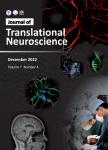Computational fluid dynamics modeling in intracranial atherosclerotic disease
Computational fluid dynamics modeling in intracranial atherosclerotic disease作者机构:Department of Medicine and Therapeuticsthe Chinese University of Hong KongHong Kong 999077China Shenzhen Research Institutethe Chinese University of Hong KongShenzhen 518172China
出 版 物:《Journal of Translational Neuroscience》 (转化神经科学电子杂志(英文))
年 卷 期:2017年第2卷第2期
页 面:7-15页
学科分类:10[医学]
基 金:The work was partly supported by the Young Scientists Fund, National Natural Science Foundation, China(81601000) General Research Fund(14117414) Research Grant Council of Hong Kong the Young Elite Scientist Sponsorship Program 2017-2019(Referece 2017 QNRCOOL) the China Association for Science and Teohnology
主 题:intracranial atherosclerotic disease(ICAD) computational fluid dynamics(CFD) wall shear stress(WSS) fractional flow reserve(FFR) hemodynamics cerebral vascular disease
摘 要:Intracranial atherosclerotic disease(ICAD)is an important cause for ischemic stroke and transient ischemic stroke(TIA)throughout the world,especially in Asians,which is not fully appreciated,partly due to its inaccessibility and limitations of current neuroimaging *** computational fluid dynamics(CFD)modeling technique provides a novel approach to reveal the hemodynamic characteristics in ICAD,e.g.,the distributions of pressure,wall shear stress and flow *** this review article,we aim to provide an overview of the general methodology of CFD modeling in arterial stenotic diseases,the established application of this technique in coronary artery disease,and more importantly,perspectives and challenges of this technique in the investigation of *** findings of preliminary studies using a CFD model for hemodynamic analysis in ICAD warrant *** studies in this area will help rectify loopholes in the current secondary prevention strategy,and inform individualized treatment for ICAD patients in the near future.



